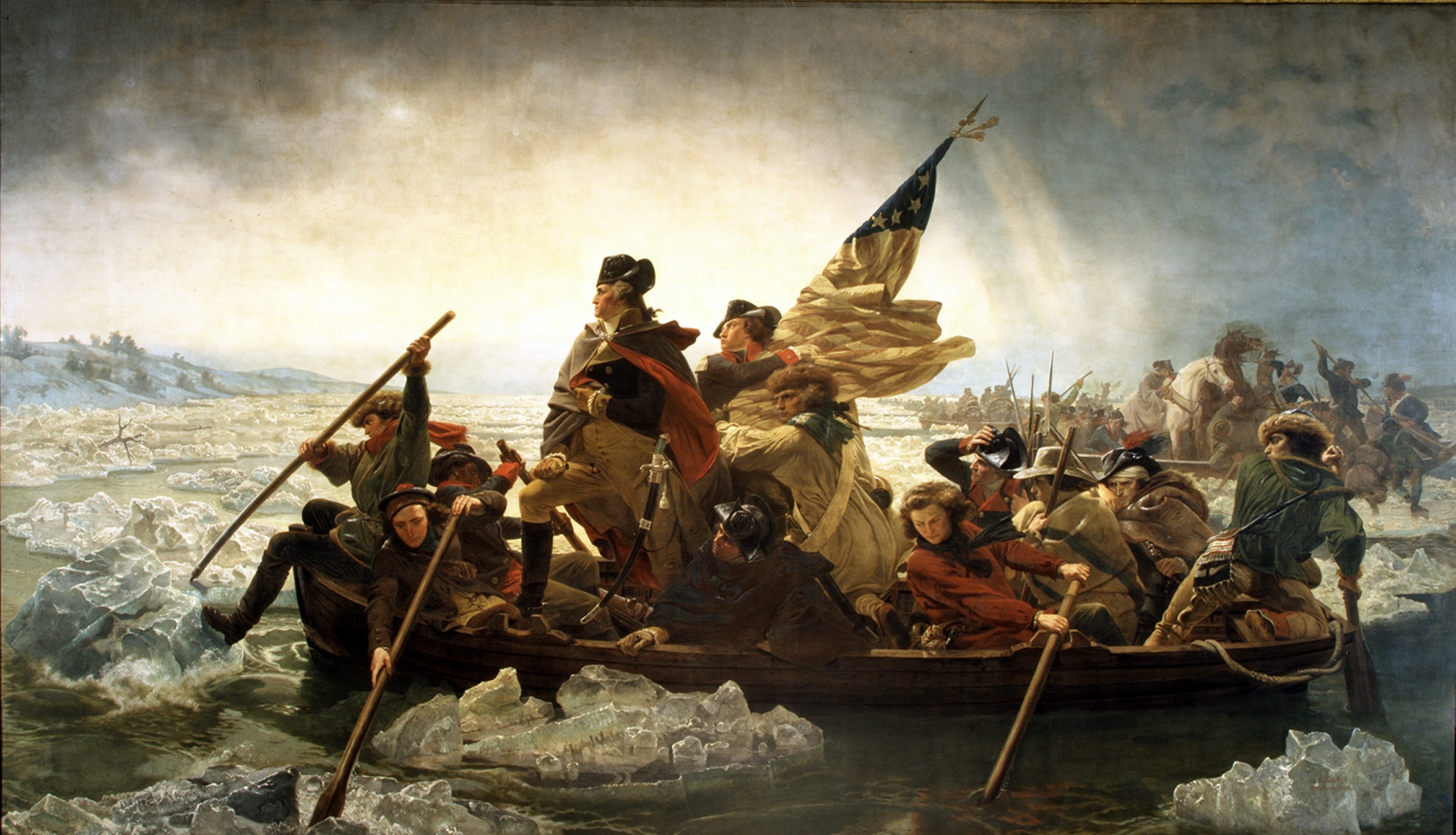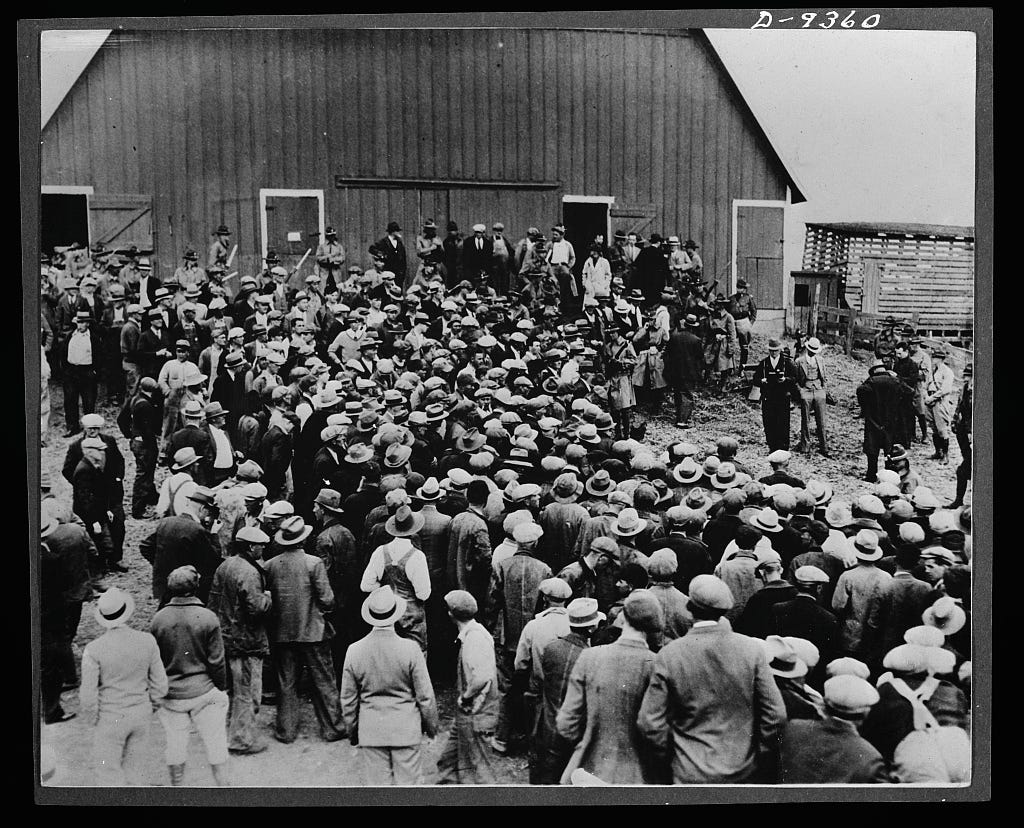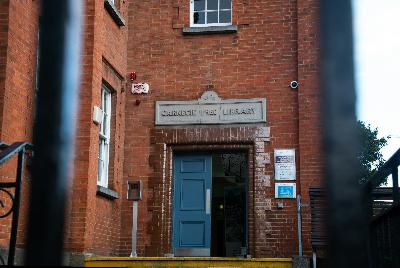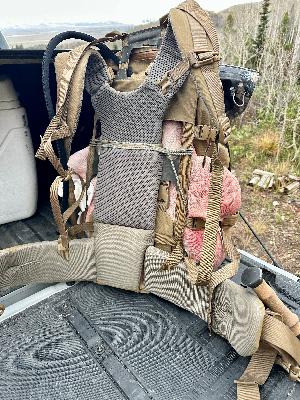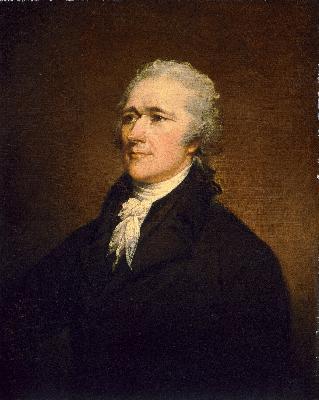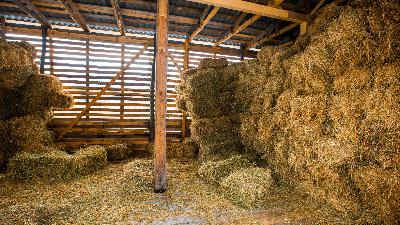Should Public Money for Schools Guarantee More Than Learning?
Description
Should Public Money for Schools Guarantee More Than Learning?
This week, the National School Lunch Program, born out of national defense, and the rise of homeschooling vouchers, where freedom meets responsibility.
And next week, we’ll dig even deeper with our guest, Shaka Mitchell!
But for now … the lights are dimming.
Look! There's the curtain!
Scene One. Frontier America, 1809
Education, even without public funds, can serve national goals like Union and Liberty.
A father and mother have their second child! A boy named Abraham, born in a one-room log cabin in Kentucky. The father, a cold and stern man, had built the structure by hand. Dirt floor. No windows. A fireplace for heat and little else. The boy’s father couldn’t read. His mother knew her letters, but not much more. When she died, the boy was nine years old. He was left in the care of his 11-year-old sister.
His father soon arranged a marriage of convenience with a widow who had three children of her own. When she arrived at the farm, she found his two children so filthy that the first thing she did was draw a bath for them.
She was a godsend for the boy, loving him like her own children. Neighbors called him lazy because he wasn’t much for farm work, and the boy and his father had heated arguments. But his new mother saw something different. He was hungry. Yes, for food. But also for words.
There was no school, so she taught him how to teach himself. She got him books, like the family Bible, but also “Aesop’s Fables,” “Robinson Crusoe,” and “Pilgrim’s Progress.”
She taught him “how” to learn, to study, to chase every scrap of knowledge he could find. At night, by firelight, he copied passages onto wooden shingles with charcoal. He had no paper, no ink. He’d rub out the words, write again, and memorize them line by line.
Neighbors remembered seeing him walking with a book in one hand, axe in the other, reading between swings.
He left home in his young twenties to seek his fortune, but he always came back to see her every year or two. He bought some property for her to live on after his father died.
The last time he saw her was in 1861, when he stopped to bid her farewell before leaving for Washington and his inauguration as the 16th President of the United States. She mourned his death in 1865, and she passed in 1869.
With Sarah Bush Johnston Lincoln’s backing, the boy who copied Bible verses onto wooden shingles with charcoal grew into the man who wrote the Gettysburg Address, President Abraham Lincoln.
Would we say today that Abraham Lincoln was homeschooled? Uneducated? Self-taught? However we label it, no one could argue that his lack of formal schooling limited his potential.
Lincoln, self-taught in a Kentucky cabin, became a president who preserved the Union. His education, guided by a caring stepmother, shows how learning builds national strength, even without public funds. But when public money enters the picture, what ensures the child’s welfare?
Scene Two. Perris, California; January 2018 — Justice and Welfare
Before dawn, a 17-year-old girl climbed out of a basement window with an old phone and dialed 911. She planned her escape for two years, practicing how to use a phone because she’d never been outside alone. Her voice shook as she tried to explain what the house looked like inside. At one point, she said, “My two little sisters right now are chained up.”
Riverside County Sheriff's Deputies walked into darkness and the sour smell of waste. They found 13 siblings, ages 2 to 29. Some were shackled. Most were so thin the deputies thought the older ones were still children.
Food was rationed; they only ate once a day. Showers, once a year. Teeth never seen by a dentist. Beatings and strangling as punishment. The district attorney later said the house was “foul-smelling,” and the children showed signs of long starvation and nerve damage. Seven of the captives were adults, but their bodies looked like they had been kept small. One victim, 29 years old, weighed about 82 pounds.
On paper, this was a school. The adoptive father had filed a private-school affidavit with the state. He listed himself as principal of “Sandcastle Day School.” In California, that filing exempted children from compulsory public attendance, and there was no routine state inspection of such “schools.”
No one looked inside for years.
The girl who called 911 gave them an opening. Deputies cut chains. Paramedics carried out brothers and sisters who could barely stand. Prosecutors charged the parents with torture, false imprisonment, willful child cruelty, and abuse of dependent adults. They later added perjury against the father for lying on the school affidavits. In 2019, both parents pleaded guilty. The court sentenced them to 25 years to life in prison as part of the plea agreement.
The rescue did not end the harm. Some of the younger children were later placed with foster parents who also abused them, and those foster parents were convicted and sentenced. Five years after the rescue, county officials acknowledged that the state failed to get basic services to the siblings.
This case is a sinister mirror of President Lincoln’s homeschool experience. A “homeschool” on paper can become a blessing or a cage in practice.
In 2018, a California homeschool hid torture behind a private-school affidavit. Public funds for homeschooling, like those for school lunches, must ensure kids are safe and fed, not starved and chained.
The Test of Legitimacy — Welfare and Tranquility
Now the scene is set, and we can ask our question. As states expand vouchers and tax credits for homeschooling, what obligations follow?
Does accepting the American people’s money for schooling create an obligation beyond academics?
Liberty in private is one thing. Liberty with the people’s money is another. Public funds carry obligations of legitimacy. These are the same assurances schools already provide: food, safety, health, and visibility.
Religious liberty and government overreach are real concerns. So are child welfare checks, meals, vaccinations, and sports. We need a standard that defends liberty and protects children.
We think we care about the freedom to choose how a child learns. We think we care about waste of public funds. We think we care about officials telling our children what they should know.
Take a couple of examples. Some parents want physical education to mean kids running for an hour, not sitting for “health.” Others say there is no such thing as an average child, and any system built for the average will fail the real ones in front of us.
These are legitimate concerns for individuals. I say again—Individuals. Parents should exercise their liberty in how they educate their children. That right stands whether or not public money is involved. And while critics point to abuse in homeschooling, most homeschoolers are not abusive. Abuse exists everywhere. Public and private schools are not automatically safer.
But that is not the decisive concern. The issue is not good parents versus bad parents. It is the obligations that come with public money.
The government owns nothing. Every dollar it spends is the people’s money. We pool those dollars to build what no family can build alone: roads, bridges, water systems, and schools. Because there is more to school than classes.
That collective pool comes with obligations. Every day, in public or private schools, an adult lays eyes on a child. Every day, a child who needs a meal can get one.
So yes, we can support individual choice with the American people’s money. But if we choose to take that money, we also choose an obligation to legitimacy.
The test is simple. Education is a public function, bound by federal rights. Parents have broad freedom to educate their children, but when public money follows the child, they are spending the people’s money.
No one gives you money with no strings attached. The people may ask for basic assurances: that a child is seen, safe, nourished, and protected from disease.
Food as Defense — Provide for the Common Defence
Let’s think about the school lunch program.
Almost every presidential administration fights over school lunches. But the political theater hides the real purpose of the program.
One of the nation’s six goals is to Provide for the Common Defence. That doesn’t stop at bu


